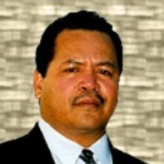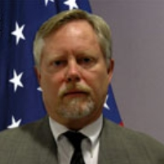Overview
Palau is the home of beautiful rock islands, story boards, betelnut, and a people who are determined to control their own destiny. Plagued by centuries of interference, primarily from the British and Americans, Palau found itself the scene of a horrific battle between the Americans and Japanese in World War II. After the war, it became part of the United Nations Trust Territory of the {acific Islands. When that was dissolved, Palau was supposed to be part of the Federated States of Micronesia, but rejected inclusion because the other islands didn’t want to make Palau the capital. Not wanting to be controlled by other islanders, and desired by the United States for a future military base, Palau struck out on its own, making a separate deal with the U.S. government. In spite of violence that marred the implementation of the free association compact, Palau has fared the best out of the former Trust Territory districts. Most of the money provided by the United States has actually been spent wisely, and the United States hasn’t even put in a military base and now most likely won’t. The true test will come in 2009, when the compact will end and Palau will have to survive on proceeds from a trust fund and local revenues.
more
less
Basic Information
Location: The Republic of Palau is the westernmost island group in Micronesia. It consists of a cluster of high islands dominated by limestone ridges including hundreds of the famous rock islands plus a few scattered outer atolls. It is located west of Yap State of the Federated States of Micronesia and about 600 kilometers east of the Philippine island of Mindanao.
Population: 21,000 (2008 est.)
Ethnic groups: Ethnic Palauans make up about 70% of the population. Also indigenous to Palau are a small number of Carolinians who come from the outer islands of Sonsorol, Hatohobei (Tobi), Pulo Anno, and Merir. They may make up 2% of the population. Outside groups who are now living in Palau include Filipino 15%, Chinese 5%, white 2%, other Asians 2.4%, other Micronesians 1%, and others 3%.
Languages: The Paluan constitution states that the official languages are Palauan and English except on Sonsorol,Pulo Anno, and Merir, where Sonsorese and English are official, Tobi (Hatohobei) and Helen Reef, where Tobian and English are official, and Anguar, where Anguar, English and Japanese are official.
Religion: The population is currently 42% Roman Catholic, 23% Protestant, 9% Modekngei (an indigenous religion), 5% Seventh-day Adventist, 1% Jehovah’s Witness, 0.6% Mormon, 3% other, and 16% unspecified or none.
more
less
History
The ancestors of today’s Palauans settled the island group more than 3000 years ago, arriving from either the Philippines or Indonesia. Nearby Yap was also settled at this time, and the Palauans allowed the Yapese to come to some unused islands to make their unique Yapese stone money from limestone outcroppings. Sailors from a shipwrecked British ship in 1783 helped Koror island in its battles with its chief rival, the district of Melekeok, setting the tone for European involvement in Palauan politics that would continue for centuries. Beachcombers and traders began to settle in. In a case of British gunboat justice, a Koror chief was executed for the murder of a white trader. In another incident, the canoe houses and canoes of Koror’s rival village of Melekeok were destroyed by the U.S. Navy. In the 1880s the Spanish made some effort at controlling the island group as part of their claims to Micronesia, but were not too successful. The Germans tried to take charge of the group after purchasing them from Spain at the conclusion of the Spanish-American War. Their administration was brief, lasting only until the islands were occupied and taken over by the Japanese during WWI. Japanese rule was comparitively harsh and exploitative. Phosphate deposits on Angaur were mined by forced labor, often from other parts of Micronesia. Military bases were built to “defend” the islands from Japan’s enemies. During WWII a ferocious and, many feel, unnecessary battle was fought between the Americans and Japanese on Peleliu. At the conclusion of the war, the islands were occupied by the United States and then placed into the Trust Territory of the Pacific Islands.
Thousands of Palauans have migrated to Guam, the Northern Marianas, and the United States. There are at least 2,000 Palauans on Guam, 1,000 on Saipan in the Northern Marianas, another 2,000 or so in Hawaii, and several thousand more scattered across the mainland. Many of these communities were established long ago, even before the compact of free association was enacted that allowed them to migrate freely to the United States or any U.S. territory. These overseas Palauans provide much-needed cash in the form of remittances to relatives still living in Palau.
more
less
History of U.S. Relations with Palau
The United States became the administering authority for Palau when it was included in the creation of the United Nations Trust Territory of the Pacific Islands in 1947. This was a unique Trust Territory, as it was set up through the Security Council of the United Nations on which the United States has a veto. Also included in the Trust Territory were the Northern Marianas, the Marshall Islands, and the islands now comprising the Federated States of Micronesia (FSM). The United States was technically obligated to prepare Palau economically and politically for self-rule. As with the rest of the Trust Territory, little was done until the 1960s. Then, amid criticism that the United States had neglected economic and political development in the islands, the budget for the Trust Territory tripled in the early 1960s. Palau and the other islands were soon swimming in U.S. dollars, U.S. administrative and technical personnel, and eventually Peace Corps Volunteers. A huge bureaucracy developed. The result was a rapid change from subsistence to a cash economy, resulting in more dependency on U.S. funding for the increased government. Government jobs and other spending became the main support of the local cash economy.
By the 1970s efforts began to develop options for a future status for the Trust Territory, including Palau. Statehood in the United States, commonwealth with the United States, free association with the United States, and full independence were considered. Originally slated to be part of the FSM, Palau withdrew and requested separate negotiations with the United States to craft its own free association compact separate from the other islands. The Palauans claimed it was because the rest of the FSM refused to make Palau the capital. However, since the United States wanted a possible military base in Palau, the best thing to do was cut a separate deal. Under free association, Palau would get to control its local government, get money from the United States for operations, economic development, and capital improvement, and Palauans would be allowed to migrate to the United States or any U.S. territory. The United States would be allowed to construct a military base in Palau if it wanted, and would have “denial rights,” or the right to deny access to the islands from any country the United States didn’t approve of.
While the FSM and the Marshall Islands were able to begin their compacts in 1986, Palau’s compact was stalled by legal challenges. Several votes were held and the compact always passed, but not by the required 75%. About 65% of the population supported the compact, but a solid 35% were opposed. Fears of the potential U.S. bases attracting attacks from other countries, as Japanese bases had during World War II, fears the United States would bring nuclear weapons to Palau, and concern over the 50-year length of the defense agreement with the United States fueled the controversy. Opponents of the compact filed lawsuits. Both sides resorted to violence. The United States refused to change the compact to make it more palatable to the opponents, telling Palau to take it or leave it as is. Eventually, the Palauan constitution was amended to allow approval by a lower percentage, and the compact was approved. Legal challenges failed, and it was fully implemented in 1994.
more
less
Current U.S. Relations with Palau
The United States currently is supplying money to support Palau. The total for the first 15 years of the compact is about $500 million, much of it going into a trust fund. The United States never built a base in Palau and no plans are in the works to build any at this time. Considering all the acrimony and violence that accompanied the campaigns for and against approving the compact, since implementation things have been relatively quiet and peaceful. A new capital has been built in Melekeok, a road around the largest island of Babelthuap has been completed, and the economy has been improving. The current funding for the compact will run out in 2009. After that, Palau must support itself from its compact endowment, various U.S. federal programs extended to Palau, and local revenues. In 2007 the endowment trust fund was estimated to be worth $166 million.
U.S. Embassy in Palau
P.O. Box 6028
Republic of Palau 96940
Telephone: 680-488-2920/2990
Fax: 680-488-2911
more
less
Where Does the Money Flow
The areas of the United States most concerned with U.S. relations with Palau are the territory of Guam, the Commonwealth of the Northern Marianas (CNMI), and the state of Hawaii. These areas have seen the largest concentration of Palauan migrants. The United States government is supposed to help defray the costs to these areas of the immigrants by providing “compact impact” money. Unfortunately for Guam, the CNMI, and Hawaii, there is considerable disagreement as to how to determine the exact amount of the impact, and the money provided by the United States has been much less than claimed by the territories and Hawaii.
Palau’s exports to the United States are minimal. A garment factory in 2003 provided $1.4 million worth of clothing, but it has since shut down. In 2007 Palau exported to the United States products with a total value of $386,000, most of that fish.
In 2007 Palau imported $13.8 million worth of goods from the United States, about half of it food. In 2006, the United States began supplying Palau with drilling and oilfield equipment. The U.S. also provides for Palau’s defense.
more
less
Past Ambassadors
Past Ambassadors to Philippines and Palau
Kristie Kenney 3/22/06-present
Darryl N. Johnson 8/05-3/06
Joseph Mussomeli 4/05-8/05
Francis J. Ricciardone Jr. 2/21/02-4/3/05
Robert W. Fitts 9/01-2/02
Michael E. Malinowski 7/00-9/01
Thomas C. Hubbard 9/3/96-7/24/00
more
less
 Kyota, Hersey
Kyota, Hersey


 Kyota, Hersey
Kyota, Hersey









Comments